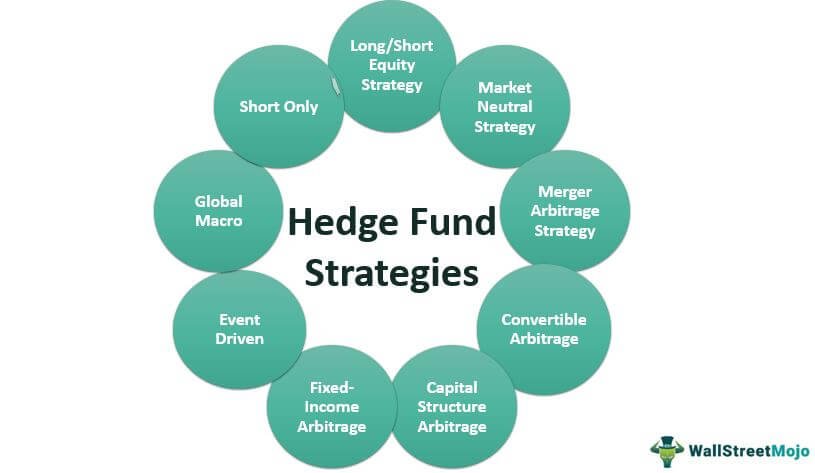If you’re seeking clarity on what a hedge in investment strategy truly means, you’re in the right place. A hedge is not just a simple shrub lining your garden—it’s a powerful tool that can safeguard your investments and protect against potential risks. Understanding how to effectively use a hedge in your investment strategy is key to navigating the volatile world of finance. So, let’s dive into the concept of what a hedge in investment strategy entails and how it can fortify your financial journey.
What is a Hedge in Investment Strategy?
When it comes to investing, there are various strategies that investors employ to manage risk and maximize returns. One such strategy is hedging. In simple terms, a hedge is an investment made to offset or reduce the potential losses that may be incurred from another investment. It acts as a form of insurance, protecting the investor’s portfolio from unfavorable market conditions.
The Concept of Hedging
At its core, hedging aims to minimize the impact of adverse price movements or market fluctuations. It involves taking on positions that will counterbalance the potential losses from other investments. The goal is to create a balanced portfolio that can withstand unexpected events and mitigate risks.
While many investors associate hedging with the stock market, it can be applied to various asset classes, including commodities, currencies, and derivatives. The key is to identify investments that have a negative correlation with each other, meaning that when one investment performs poorly, the other is likely to perform well.
Types of Hedges
There are several types of hedges that investors can utilize to manage risk effectively. These include:
1. Short Selling
Short selling involves selling borrowed securities with the expectation that their price will decline. By selling high and buying back at a lower price, investors can profit from a falling market. This strategy is often used to hedge against a decline in the value of a particular stock or asset.
2. Options
Options are financial derivatives that give investors the right, but not the obligation, to buy or sell an asset at a predetermined price within a specified period. By purchasing put options, investors can protect themselves from market downturns by selling the underlying asset at a predetermined price. Conversely, call options allow investors to profit from price increases.
3. Futures Contracts
Futures contracts are agreements to buy or sell an asset at a future date and a predetermined price. They are commonly used to hedge against price fluctuations. For example, a farmer who grows crops may enter into a futures contract to lock in a price for their produce, protecting themselves from potential price declines.
4. Exchange-Traded Funds (ETFs)
ETFs are investment funds traded on stock exchanges, representing a diversified portfolio of assets. Some ETFs are designed to replicate the performance of a specific index or sector. By investing in ETFs that have an inverse correlation with their existing investments, investors can effectively hedge their portfolio against market downturns.
Benefits of Hedging
Hedging can provide several benefits for investors, including:
1. Risk Management
The primary objective of hedging is to manage risk. By strategically employing hedges, investors can reduce the potential impact of adverse market conditions on their portfolio. This allows for a more balanced approach to investing, minimizing the likelihood of significant losses.
2. Diversification
Hedging often involves diversifying the portfolio by investing in assets that have different risk profiles. This diversification helps spread risk and reduces the reliance on a single investment or asset class. By spreading investments across various sectors or markets, investors can increase the likelihood of positive returns.
3. Capital Preservation
One of the key benefits of hedging is the preservation of capital. By offsetting potential losses with hedges, investors can protect the value of their portfolio. This is particularly important during periods of market volatility or economic uncertainty when prices can fluctuate significantly.
4. Opportunity to Profit
While the primary goal of hedging is to minimize losses, it can also provide an opportunity to profit. Certain hedging strategies, such as short selling or options, allow investors to benefit from price declines. This can potentially offset losses incurred in other areas of the portfolio.
Risks and Limitations of Hedging
While hedging can be an effective strategy for managing risk, it is not without its limitations and potential drawbacks. It is important for investors to be aware of these risks before implementing any hedging strategy. Some common risks and limitations include:
1. Cost
Implementing hedging strategies often involves transaction costs, such as commissions and fees. These costs can eat into potential profits and should be carefully considered before engaging in hedging activities.
2. Ineffectiveness
Hedging strategies may not always work as intended. Market conditions can change rapidly, and correlations between investments may break down. In such cases, the hedging position may not provide the desired protection, leading to potential losses.
3. Opportunity Cost
Hedging requires capital allocation to the hedging positions. This means that the funds allocated to the hedge may not be available for other potentially profitable investments. If the hedges do not provide the intended protection, investors may miss out on potential gains elsewhere.
4. Complexity
Hedging strategies can be complex and require a thorough understanding of the underlying investments and their relationships. Investors need to have a high level of knowledge and expertise to effectively implement and manage hedges.
In conclusion, a hedge is an investment strategy used to reduce potential losses and manage risk. By employing various hedging techniques, investors can protect their portfolio from adverse market conditions. While hedging can provide significant benefits, it is essential for investors to carefully consider the risks and limitations associated with these strategies. A well-executed hedging strategy can contribute to a more balanced and resilient investment portfolio.
Hedge fund strategies: Long short 1 | Finance & Capital Markets | Khan Academy
Frequently Asked Questions
Frequently Asked Questions (FAQs)
What is a hedge in investment strategy?
A hedge in investment strategy is a risk management technique that involves taking an offsetting position to minimize potential losses. It is done by investing in assets that have a negative correlation with the primary investment, so that any potential losses in the primary investment can be mitigated by gains in the hedge position.
How does a hedge work in investment strategy?
A hedge in investment strategy works by reducing or balancing out the risk associated with a particular investment. By investing in assets that move in the opposite direction to the primary investment, the hedge position can offset any potential losses, providing a level of protection against adverse market movements.
What are the benefits of using a hedge in investment strategy?
Using a hedge in investment strategy offers several benefits, such as reducing the overall risk exposure, protecting against market downturns, providing stability to investment portfolios, and potentially improving risk-adjusted returns.
What are some common types of hedges in investment strategy?
Some common types of hedges in investment strategy include using options contracts, short selling, futures contracts, and buying inverse ETFs or mutual funds. These techniques allow investors to profit from downward movements in the market or specific assets while holding other investments.
Is hedging only used to minimize losses in investment strategy?
No, hedging in investment strategy is not only used to minimize losses. While its primary purpose is risk management, hedging can also be employed to enhance returns or gain exposure to specific markets or asset classes. It depends on the goals and objectives of the investor.
Are there any drawbacks to using a hedge in investment strategy?
Yes, there are potential drawbacks to using a hedge in investment strategy. Hedging strategies can be complex and may involve additional costs and fees. The effectiveness of the hedge can also be influenced by market conditions, timing, and the accuracy of the hedge position. Moreover, hedges do not guarantee profits or protect against all losses.
Can individual investors utilize hedging in their investment strategies?
Yes, individual investors can utilize hedging in their investment strategies. While some hedging techniques may require more knowledge and expertise, there are simpler hedging instruments available, such as options contracts or inverse ETFs, that individual investors can use to manage their risk exposure.
How can one determine the appropriate hedge for their investment strategy?
Determining the appropriate hedge for an investment strategy requires thorough analysis and understanding of the investor’s objectives, risk tolerance, and the specific market or asset being hedged. It is recommended to consult with a financial advisor or professional who can assess the individual circumstances and provide guidance on the suitable hedging approach.
Final Thoughts
A hedge in investment strategy is a risk management technique used to minimize or offset potential losses. It involves taking a position in an asset or financial instrument that is negatively correlated with another investment. By doing so, investors can protect their portfolio against market volatility and potential downturns. A hedge can be achieved through various methods such as derivatives, options, or short selling. It provides a way for investors to diversify their holdings and reduce overall risk. Understanding what a hedge is in investment strategy allows investors to mitigate potential losses and safeguard their investments.



